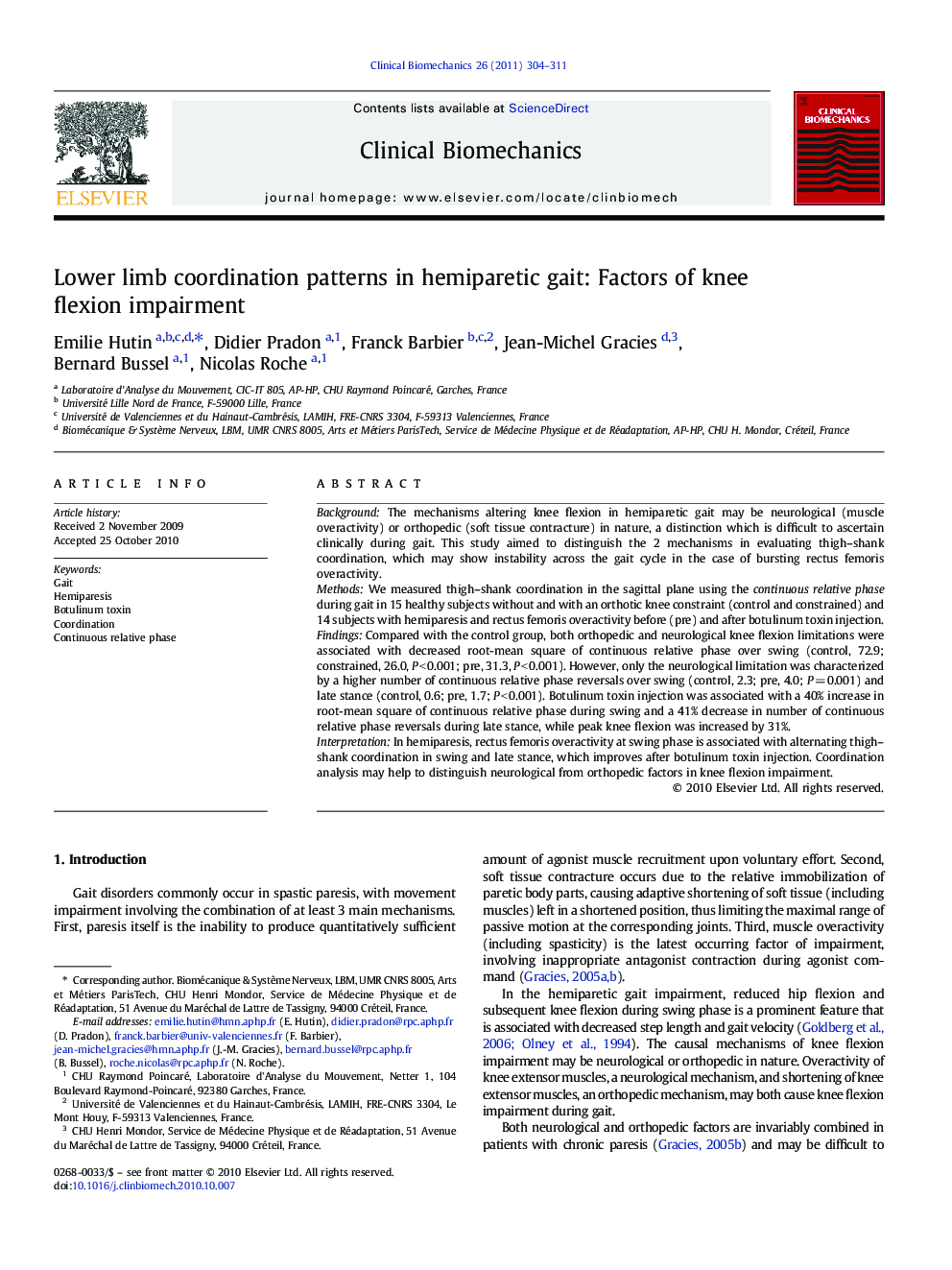| Article ID | Journal | Published Year | Pages | File Type |
|---|---|---|---|---|
| 4050928 | Clinical Biomechanics | 2011 | 8 Pages |
BackgroundThe mechanisms altering knee flexion in hemiparetic gait may be neurological (muscle overactivity) or orthopedic (soft tissue contracture) in nature, a distinction which is difficult to ascertain clinically during gait. This study aimed to distinguish the 2 mechanisms in evaluating thigh–shank coordination, which may show instability across the gait cycle in the case of bursting rectus femoris overactivity.MethodsWe measured thigh–shank coordination in the sagittal plane using the continuous relative phase during gait in 15 healthy subjects without and with an orthotic knee constraint (control and constrained) and 14 subjects with hemiparesis and rectus femoris overactivity before (pre) and after botulinum toxin injection.FindingsCompared with the control group, both orthopedic and neurological knee flexion limitations were associated with decreased root-mean square of continuous relative phase over swing (control, 72.9; constrained, 26.0, P < 0.001; pre, 31.3, P < 0.001). However, only the neurological limitation was characterized by a higher number of continuous relative phase reversals over swing (control, 2.3; pre, 4.0; P = 0.001) and late stance (control, 0.6; pre, 1.7; P < 0.001). Botulinum toxin injection was associated with a 40% increase in root-mean square of continuous relative phase during swing and a 41% decrease in number of continuous relative phase reversals during late stance, while peak knee flexion was increased by 31%.InterpretationIn hemiparesis, rectus femoris overactivity at swing phase is associated with alternating thigh–shank coordination in swing and late stance, which improves after botulinum toxin injection. Coordination analysis may help to distinguish neurological from orthopedic factors in knee flexion impairment.
